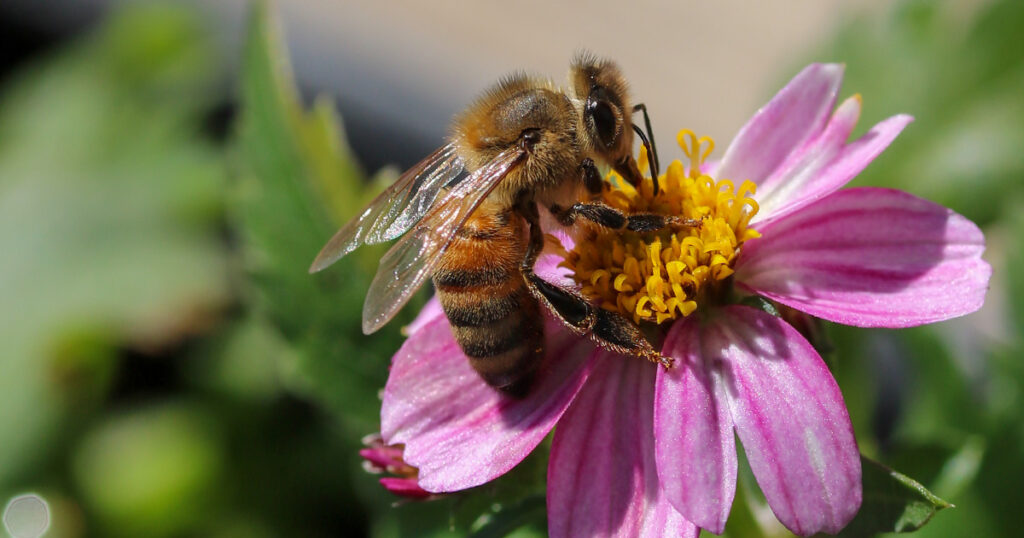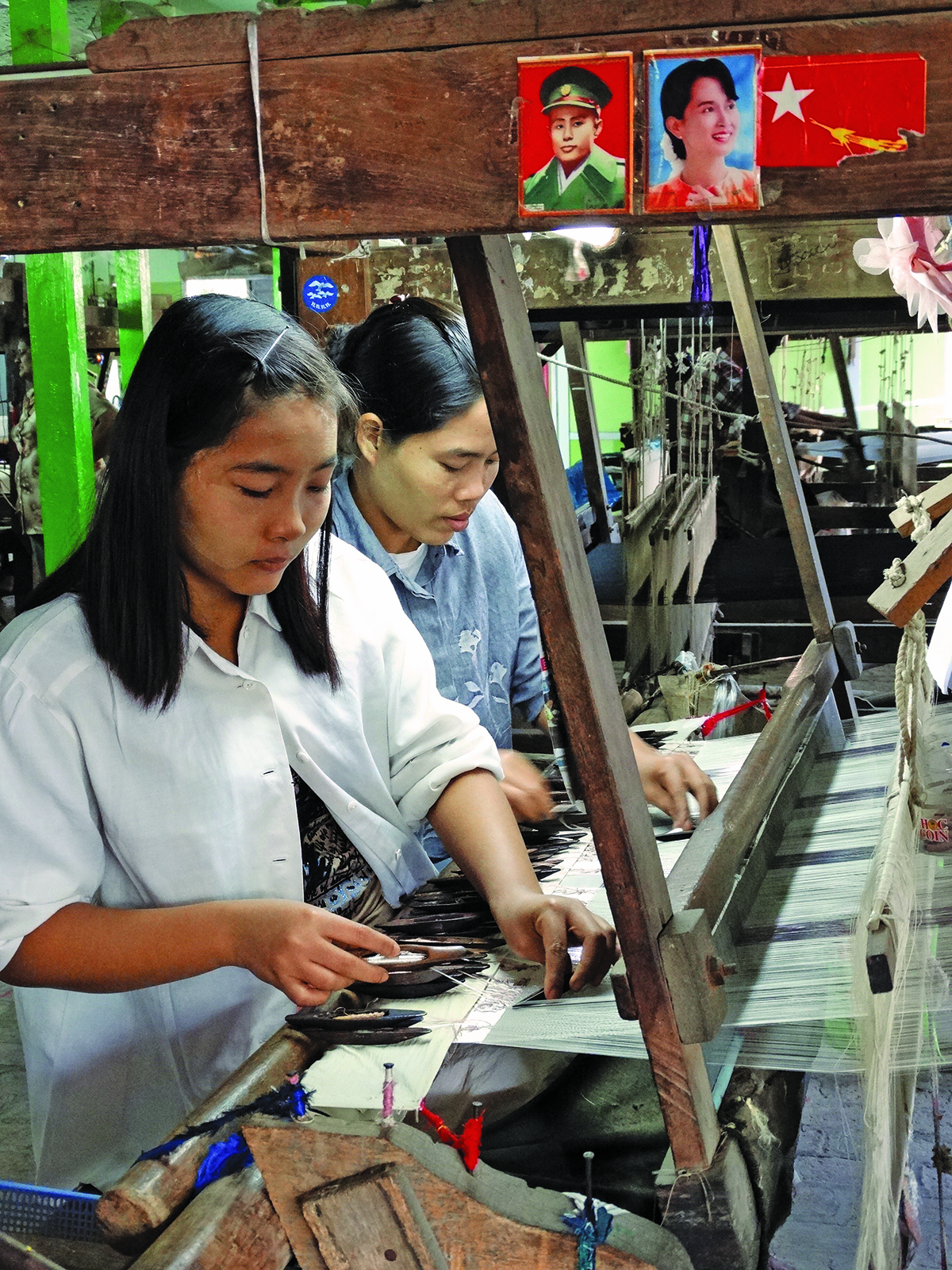
The Butterfly Effect: Insects and the Making of the Modern World by Edward Melillo; Knopf, 272 pp., $27.95
It was a brilliant bit of branding a few years ago, when scientists began warning of an “insect apocalypse” or “insect armageddon.” As a rule, very few people care about or pay attention to insects, but the idea that insect populations were crashing catastrophically, and that you could tell by simply comparing how few insects were spattering against your windshield now compared with, say, in the 1990s, caught the public’s attention. Save the insects! people pleaded. We need them to pollinate our crops, to feed the birds, frogs, and other small vertebrates we admire, to help recycle waste, and to perform other essential tasks taking place outside the walls of our homes, within which, admittedly, we don’t want insects at all.
Researchers have since pulled back from the most extreme predictions of imminent insect collapse, but many species are unquestionably in trouble, and people are still inclined to lose interest in the whole insect business. It’s timely and useful, then, to read an account of the less obvious ways that insects have enriched our daily lives, through color, luxury, and song.
In The Butterfly Effect, Edward D. Melillo, a professor of history and environmental studies at Amherst College, explores the complex history of humanity’s relationship with the class Insecta, laying out general principles of how insects operate and why they are such a successful, omnifarious clade, and then presenting a handful of case studies in which people have profited enormously from insects’ biochemical genius and fecundity.
The insect portfolio is indeed astonishing. Some 80 percent of all animal species are insects, a tally that includes at least 350,000 different beetles, 175,000 varieties of butterflies and moths, and 1,800 variations on the theme of earwig, for crying out loud. At any given time, about 10 quintillion, or 1019, insects are alive on Earth, which means that for every one of us, there are 1.3 billion of them. Uniting the dynasty are a few baseline features: compound eyes; a pair of quivering, ultrasensitive antennae; a hard outer shell, the exoskeleton (which the Defense Department would very much like to scale up for its soldiers); six legs; and a tripartite body plan of head, thorax, and abdomen. That segmentation accounts for the group name: insect, which derives from the Greek, via Latin, and means “cut into sections.” Alone among invertebrates— the vast category of unbackboned creatures that includes spiders, mollusks, crustaceans, jellyfish, worms, corals, sponges, and more—insects can fly, and most adult insects have at least a vestigial set of wings. Some of the earliest insects were enormous: the predecessors to dragonflies had the wingspan of a peregrine falcon.
But because insects lack lungs and must secure their oxygen by diffusion, the decline of atmospheric oxygen levels helped lead to insect miniaturization, and that smallness, together with the power of flight, proved a source of insect strength. Small meant quick maturation, fast population growth, and evolution at hyperspeed. It meant being able to infiltrate tiny niches, parasitize hosts barely bigger than themselves, and survive on the thin gruel of bookbinding glue or shed skin. Insects have often tormented us, devastating our crops, drinking our blood, and spreading malaria, bubonic plague, yellow fever. The 19th-century botanist and colonial administrator Harry Johnston wrote of his “sweeping hatred of the insect race” and wondered why the asylums were not filled with entomologists “driven to dementia by the study of this horrible class.”
And yet, the bees. You have to love bees and their magic, viscous gold. Honey, the product of plant nectar that has been run through several rounds of bee digestion and regurgitation, is one of the sweetest and most energy-dense foods in nature, and hominids have always craved it. Neolithic cave paintings in Spain portray people collecting wild honey, and in Central Africa, evidence suggests that hunter-gatherers have been colluding with honeyguide birds for tens of thousands of years to locate beehives hidden in trees. Formal beekeeping dates back to the ancient Egyptians, if not longer, and the fermented honey beverage known as mead may have been one of the first psychotropic lubricants of civilization. People also exploited the honeybee’s housing. “Beeswax never spoiled, and it had countless applications,” Melillo writes, “to seal ships’ hulls, coat furniture surfaces, manufacture cosmetics, and create molds for casting metals and ceramics.” Above all, it was used for illumination. The high melting point of beeswax, 146 degrees Fahrenheit, meant a wick-threaded candle could burn upright for hours.
Another fruit of insect labor that proved epochal is silk, the “supple yet exceedingly resilient” fibers extracted from the cocoons of the Bombyx mori moth. Nobody knows the exact origins of sericulture, or moth farming. The earliest silk yet discovered, a 5,650-year-old child’s burial shroud found in China’s Yellow River valley, was spun by the larvae— the caterpillars misleadingly named “worms”—of wild Bombyx moths. But the first domesticator of the moth remains a mystery. Confucius credits the Empress Leizu, who in 2640 BC, he said, was steeping tea beneath a mulberry tree when a silkworm cocoon fell into her cup. Tugging at a loose end of the pupal casing, Leizu unraveled a thread that “stretched the length of her garden,” and she realized it was just the thing she needed to gin up a royal wardrobe. She planted a mulberry grove to attract the moths and even invented a special loom for weaving the silk strands. The story may be apocryphal, but sericulture likely began in China and then spread to other countries. Roman emperors and British monarchs fought over silk, a trading route through Eurasia was named for it, and sumptuary laws often limited the wearing of silk to the nobility. People coddled silkworms “like newborn infants,” tucking the cocoons into their beds or clothes to keep them warm.

Silkworms produce a shimmery fiber that can “the tensile strength of steel” and that scientists are unable to synthesize in a lab. (Adam Jones/Flickr)
Centuries of selective breeding have transformed the silkworm larva into a kind of three-inch dairy cow, its udders a pair of salivary glands that, come pupation time, secrete gelatinous fibers over a period of three or four days at the impressive rate of four to six inches per minute. On hitting air, the fibers crisscross and harden into something that feels like Styrofoam. Harvesting silk is a tedious matter of soaking the cocoons in boiling water and then slowly “reeling in” the loosened strands, but the result has no compare. Silk fibers are built of tightly acked proteins arranged in a triangular, prismatic pattern, which means silk fabric can refract light at different angles to shimmering effect. Silk can have “the tensile strength of steel and the pliability of rubber,” Melillo writes. Scientists have analyzed silk proteins and sequenced silk genes, yet they still cannot synthesize anything approaching the beauty and complexity of real silk in the lab. Silk, one researcher said, “drives engineers to tears.”
The same inimitability holds true for a very different insect creation—shellac, an amber, resinous substance secreted by the tiny lac bug to shield its young from predators and sunlight. For thousands of years, peasants in India and Southeast Asia have raised lac bugs on fig and acacia trees to harvest the lac resin, which they crush, filter, heat, stretch, and cut into shell-shaped flakes— hence the name shellac. They’ve used shellac as medicine, to coat jewelry and craftworks, to waterproof buildings and varnish furniture. When shellac made its way west- ward in the late Renaissance, its job description expanded. Recent scientific analyses of a 1734 violin and 1736 cello from the workshop of Antonio Stradivari reveal shellac as an ingredient of the instruments’ finish and, surprisingly, central to their tonal qualities. Shellac cases protected the early daguerreotypes, and the first record albums, the 78 rpms, were molded platters of shellac.
By the mid-20th century, shellac was on the verge of obsolescence, eclipsed by synthetics like vinyl and polyurethane. Yet lately, amid fears over plastic toxicity, shellac has been making a comeback and can now be found in pharmaceuticals and cosmetics, as a protective coating on fruits, and in dental fillings. It’s a theme that animates Melillo’s lively if at times wordy and discursive book. Insects have been around for 480 million years, and they’ve solved nearly every problem nature has dealt them. Maybe it’s worth listening to what they have to say.

